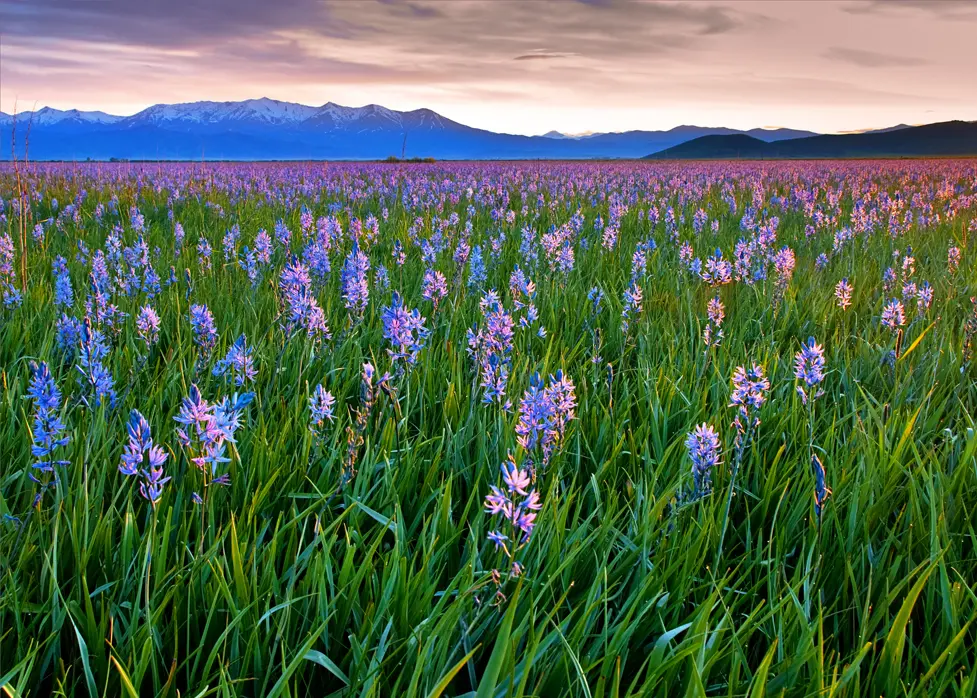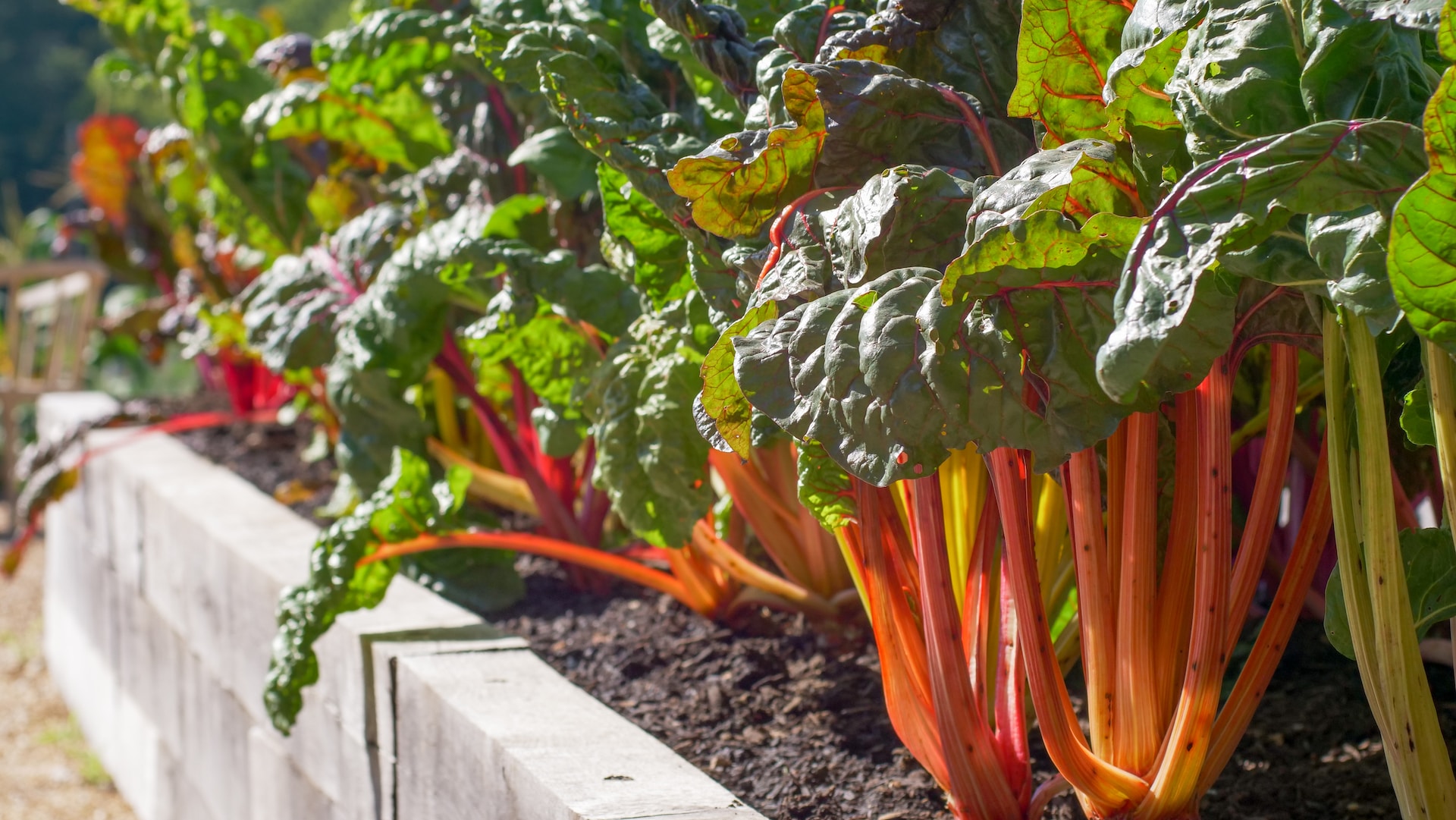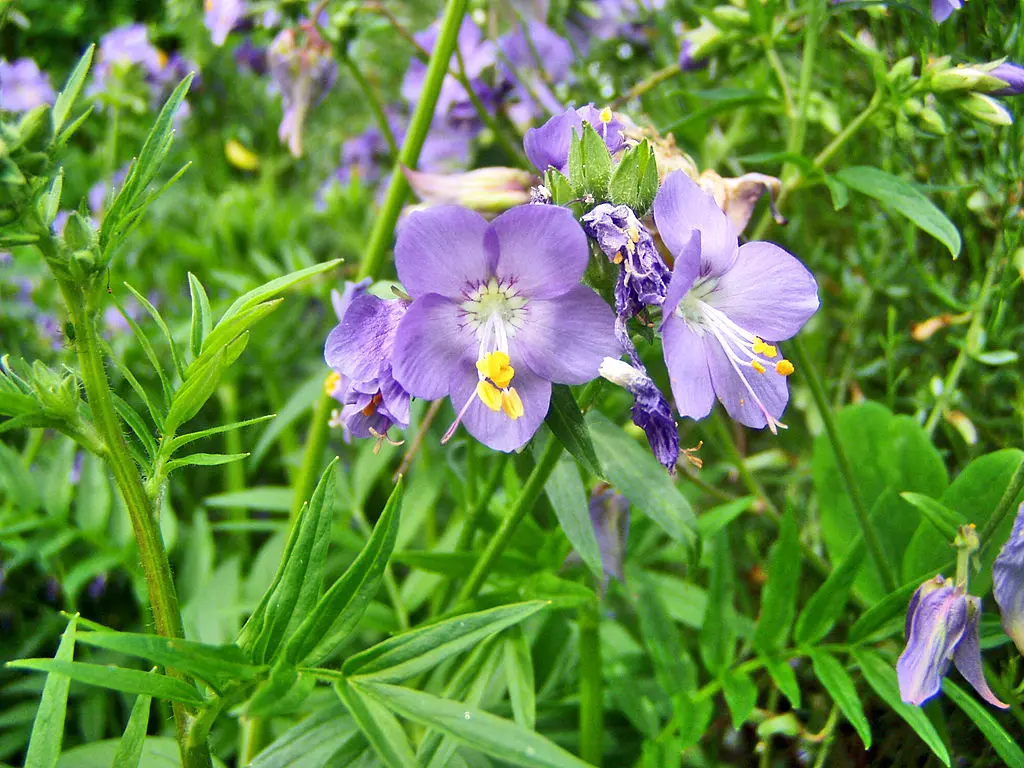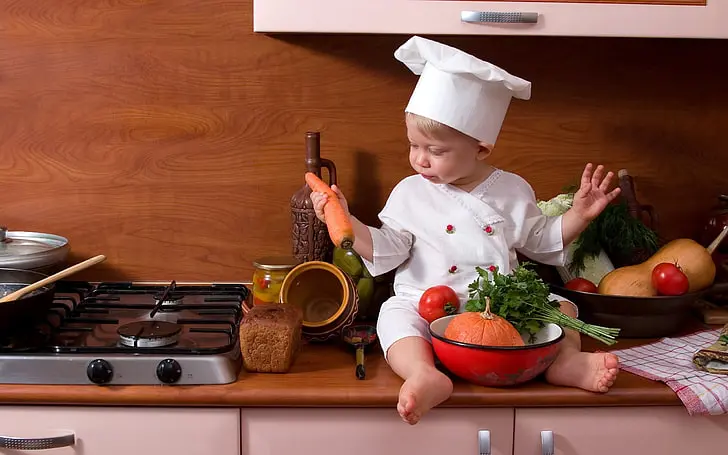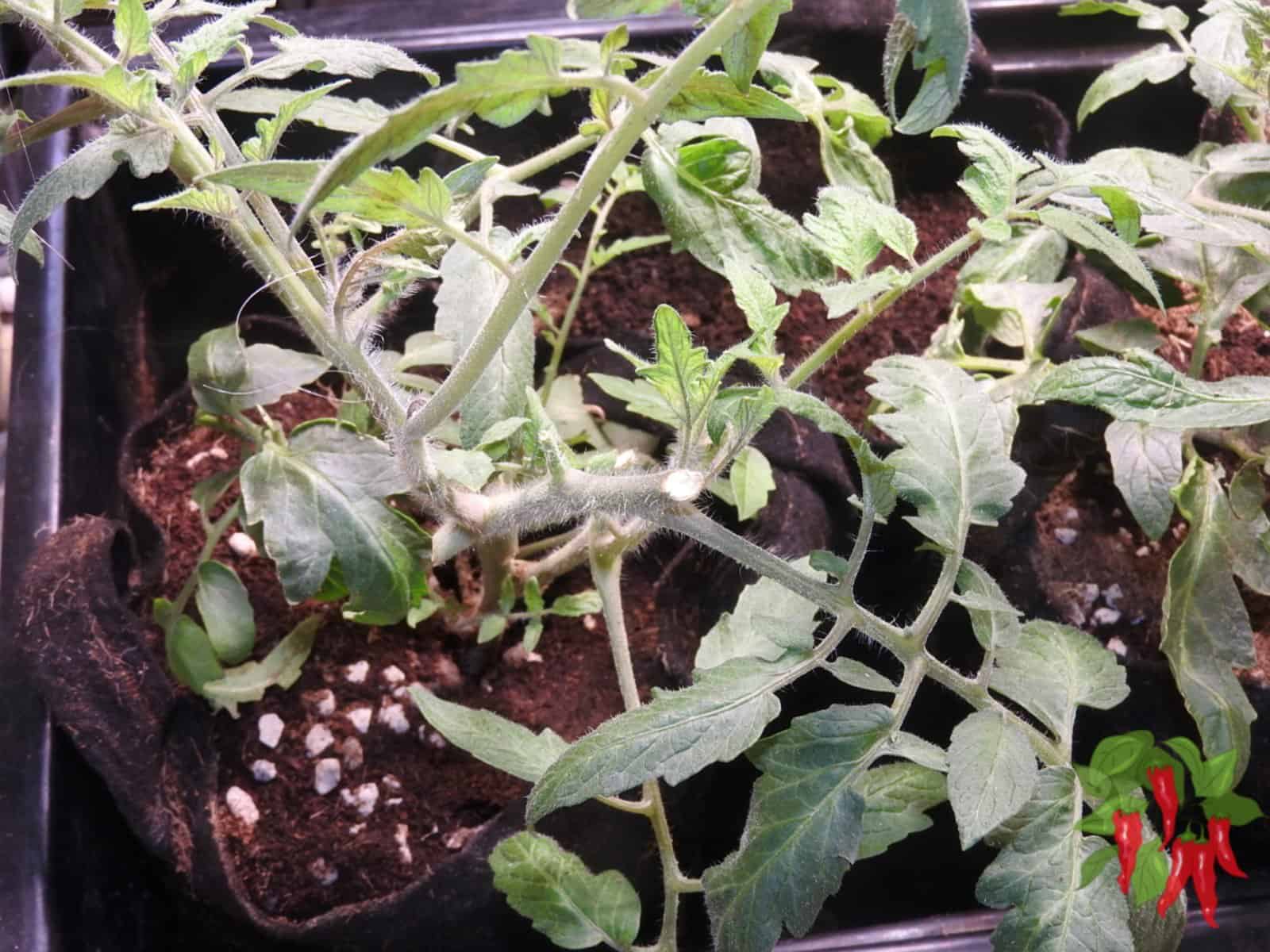This post contains affiliate links. If you buy something from one of our links we may earn a commission. Thanks
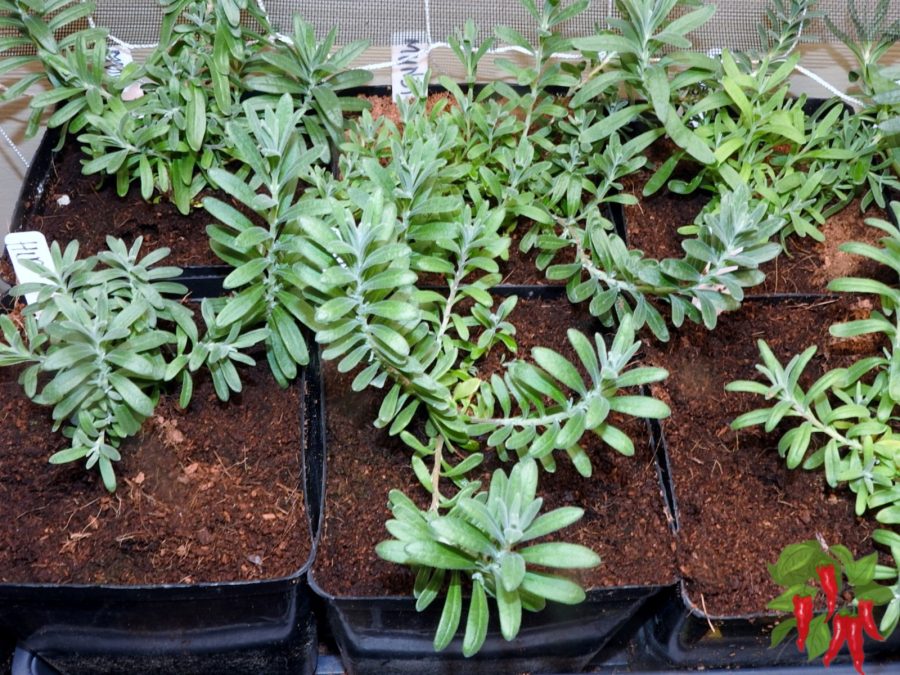
Can lavender grow indoors? Find out with our easy-to-follow guide. Get the scoop on soil, light, and watering tips in our comprehensive guide!
So, you’re smitten with the soothing scent of lavender and now you’re wondering, “Can lavender grow indoors?” You’re in luck!
Not only is it possible, but with a little know-how, you can turn your home into a fragrant oasis. Stick around as we delve into the ins and outs of indoor lavender care.
Can Lavender Grow Indoors? A Comprehensive Guide
Lavender can grow indoors if it receives at least 6 hours of direct sunlight daily, is planted in well-drained, gritty soil, and is watered moderately to avoid root rot. Ideal indoor temperatures range from 60-65°F during the day and slightly cooler at night. Proper care ensures a thriving indoor lavender plant.
Lavender plants, with its vibrant purple flowers and soothing fragrance, has long been a favorite in gardens and kitchens alike.
But what if you don’t have a garden? Can lavender grow indoors? The answer is yes, but it does require some special care.
This blog post aims to guide you through the nuances of growing this aromatic herb right in your home.
Brief Overview of Lavender and Its Popularity
Ah, lavender! Just the name alone probably conjures up images of vast purple fields swaying in the breeze, right?
This aromatic herb has been a crowd-pleaser for centuries.
Originating from the Mediterranean, it’s not just a pretty face. Lavender has made its way into everything from culinary delights to essential oils.
Its calming scent makes it a go-to for stress relief, and let’s not forget how it jazzes up a dish or a cocktail. So, it’s no wonder that people are so enamored with it.
The Question: Can Lavender Grow Indoors?
Now, here’s the million-dollar question: Can lavender grow indoors?
Maybe you’re an apartment dweller with no garden, or perhaps you just want to bring some of that calming energy inside. Good news!
You can absolutely grow lavender indoors. But and it’s a big but it’s not as simple as plopping a pot on your windowsill and calling it a day.
Lavender has some specific needs that you’ll have to meet. But don’t worry, we’ve got you covered on how to make it work.
My Lavender Plants Grown Indoors Under Lights
So here are my indoor lavender plants. There a 2 varieties Munstead and Hidcote, Remember I said they are slow-growing? These are about 4 months old and have a long way to go.
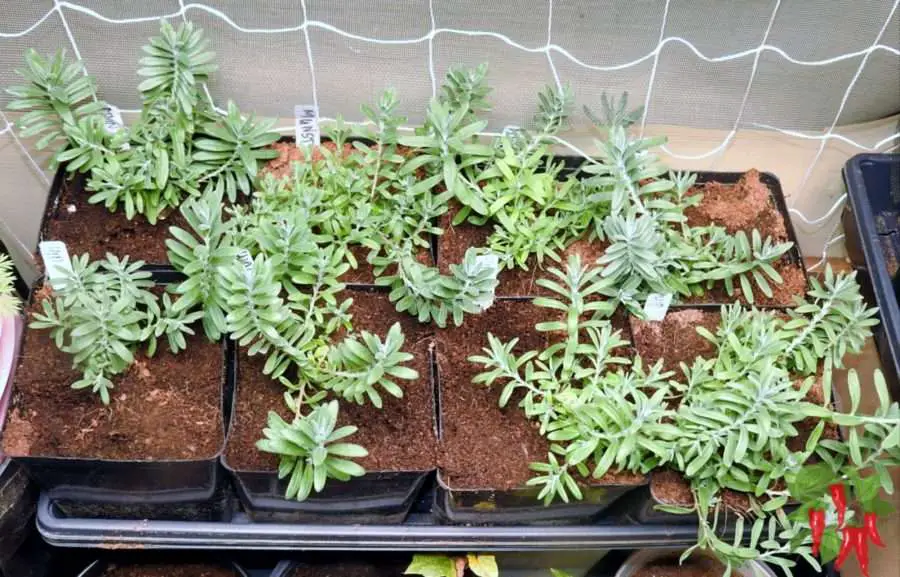
Because lavender grows slowly and is hard to germinate I recommend saving yourself some time and buying an established lavender plant. But you can buy seeds.
Importance of Understanding Indoor Lavender Care
You might be thinking, “It’s just a plant, how hard can it be?”
Well, understanding the ins and outs of indoor lavender care can make the difference between a thriving, fragrant bush and a sad, wilting mess.
It needs the right amount of light, the perfect soil, and just enough water, not too much, not too little.
Get it right, and you’ll have a happy, healthy plant that not only looks great but also fills your home with that soothing aroma you love so much.
The Basics of Lavender
Before we dive into the nitty-gritty of indoor care, let’s get to know this versatile herb a bit better.
From its Mediterranean roots to its many types and uses, understanding the basics of lavender will make your indoor gardening journey all the more rewarding.
Origin and Natural Habitat
So, where does this fragrant wonder come from? Lavender hails from the Mediterranean region, a place known for its hot, dry summers and mild winters.
Imagine rolling hills and endless fields of vibrant purple. That’s lavender’s original home.
It thrives in well-drained soil and loves soaking up the sun.
Knowing this helps us understand why lavender has certain preferences when it comes to light and soil, especially if you’re planning to grow it indoors.
Types of Lavender Varieties
Ready to meet the family? Lavender comes in a few different varieties, each with its own unique traits.
English Lavender: (Lavandula angustifolia) This is the classic. When people think of lavender, they’re usually picturing English lavender. It’s known for its strong, aromatic scent, making it the top choice for lavender essential oil and sachets.
French Lavender: (Lavandula stoechas) A bit more on the decorative side, French lavender has softer, more feathery leaves and is often used in floral arrangements. While it’s not as fragrant as its English cousin, it’s still a beauty to behold.
Spanish Lavender: (Lavandula stoechas)This one’s a showstopper with its unique “rabbit ear” petals. While not as commonly used for its scent, Spanish lavender is a visual delight and can add a pop of color and texture to any indoor garden.
Canary Island Lavender: (Lavandula canariensis) This one has emarald green lacey foliage
Common Uses
Lavender is a jack-of-all-trades. Let’s look at some of the most popular ways it’s used.
Culinary: Ever tried lavender lemonade or lavender-infused shortbread cookies? If not, you’re missing out!
Lavender has a subtle, slightly sweet flavor that can elevate a variety of dishes. Just remember, a little goes a long way.
Aromatherapy: Ah, the calming effects of lavender. Whether it’s in a diffuser, a sachet under your pillow, or a relaxing bath soak, lavender is a go-to for stress relief and relaxation.
Cosmetics: From soaps to lotions to shampoos, lavender often finds its way into cosmetic products. Not only does it add a lovely scent, but it also has antiseptic properties.
Challenges of Growing Lavender Indoors
Let’s talk about the elephant in the room: the challenges of growing it indoors. You might be thinking, “How hard could it be?”
Well, lavender is a bit of a finicky houseguest and it has some specific needs and preferences.
Once you know what to watch out for, you’ll be well on your way to having a thriving indoor lavender plant. So, let’s dive into the hurdles and how to clear them like a pro!
Lavender Seeds
If you want to grow lavender from seed you need to stratify them for best germination. They are slower to germinate and may not germinate at all without a cold treatment.
Patience is key here. Even stratified seeds can take weeks to germinate and they are very slow growers as young indoor plants. If you can get lavender cuttings from a friend or buy a nursery plant things will go much faster.
Light Requirements
Lavender loves the sun, and if it had its way, it would bask in it all day long. Making sure it receives enough sunlight is the secret to growing it indoors. It needs full sun to thrive.
When you’re growing it indoors, aim for at least 6 hours of direct sunlight and 8-10 is even better.
A south-facing window is your best bet. If that’s not possible, consider supplementing with artificial led grow light.
LED grow lights can be a game-changer, and the best ways to give your lavender enough light especially during those gloomy winter months.
Just remember, lavender without enough light is like a beach vacation without the sun and it’s just not the same!
Temperature Sensitivity
Now, let’s talk temperature. Lavender prefers it cool. Ideal indoor temperatures range from 60-65°F during the day and a bit cooler at night.
If the temperature gets too hot, your lavender might start to sulk (read: wilt). So, keep an eye on the thermostat and maybe even consider a small fan for air circulation.
Humidity Factors
Last but not least, let’s chat about humidity. Lavender comes from a region that’s not too humid, so it doesn’t like to be too wet or too dry.
It’s like the Goldilocks of plants! If the air in your home is too dry, consider a room humidifier.
On the flip side, too much humidity can lead to root rot. A well-draining pot is essential to keep that delicate balance.
Ideal Conditions for Indoor Lavender
Now that we know the challenges, let’s focus on creating the ideal conditions for your indoor lavender.
From sunlight to soil, we’ll cover everything you need to know to keep your lavender thriving indoors. Let’s get started!
Light
Natural Light: First things first, let’s talk about sunlight. Lavender loves it and needs at least 6 hours of direct sunlight to really thrive. A south-facing window is ideal for this. If you can place your lavender pot there, you’re off to a great start.
Artificial Light Options: Now, if you’re short on natural light, don’t worry.
You can supplement with artificial light. LED grow lights are a good choice as they can mimic the full spectrum of sunlight.
Just make sure to keep them on for enough hours to meet that 6-hour minimum.
If you are relying just on LEDs you want them on for 10-12 hours daily.
Even with a sunny window, you will probably need to supplement it during the winter.
Temperature
Temperature is another key factor. Lavender prefers a cooler indoor environment.
Aim for temperatures between 60-65°F during the day and a bit cooler at night.
It can handle warmer temperatures but if temperatures rise too much (above 90°), your lavender might not be as happy and could start to wilt.
Soil Type
Soil is like the foundation of a house; it needs to be solid for everything else to work.
Lavender prefers well-drained, slightly gritty soil. It doesn’t like to sit in water, so avoid heavy, clay-like soils.
I recommend using a 50/50 mix of coco coir and perlite. If you are going to use potting soil add extra perlite to it.
Pot Selection
Last but not least, let’s talk pots. The pot you choose needs to have good drainage. This is non-negotiable.
Lavender roots don’t like to be waterlogged. A terra-cotta pot is often a good choice because it allows the soil to breathe, helping to prevent root rot. Whatever type of new pot or container you choose make sure it has drainage holes so excess water can escape.
Lavender will develop a deep taproot so the pot should be at least 12 inches deep and more is even better.
There you have it! With the right light, temperature, soil, and pot, your indoor lavender will be set up for success. Happy growing!
Watering and Feeding
Alright, let’s move on to the next chapter in our indoor lavender journey: watering and feeding.
Too much or too little, and things can go south quickly. So, let’s get into the specifics of keeping your lavender well-fed and hydrated.
Watering Schedule
When it comes to watering, lavender likes to play it cool. It prefers the soil in its root zone to be on the drier side, so you’ll want to water it thoroughly but then let the soil moisture dry out a bit before the next watering. Less water is much better than too much water for your plant.
A good rule of thumb is to water when the top inch of soil feels dry to the touch. Consistency is key, so try to keep a regular schedule.
Signs of Over-Watering
Now, what if you get a little too enthusiastic with the watering can? Well, your lavender will let you know.
The first sign is usually yellowing leaves. If you notice this, it’s time to ease up on the water.
Over-watering can also lead to root rot, which is a more serious issue that you definitely want to avoid.
Fertilization Needs
As for feeding your lavender, it doesn’t need much. A water-soluble, all-purpose fertilizer at half strength every four weeks during the growing season should do the trick.
Lavender isn’t a heavy feeder, so there’s no need to go overboard.
Pruning and Harvesting
Now that we’ve got the basics down, let’s talk about the fun part: pruning and harvesting.
Pruning helps your plant stay healthy, and harvesting lets you enjoy those fragrant flowers and leaves in all sorts of ways.
So, grab your gardening shears, and let’s get into it!
When to Prune
Timing is everything when it comes to pruning. The best time to give your lavender a little trim is in the spring, just as the new growth starts to appear.
This helps to encourage bushier growth and more flowers. You’ll want to remove about a third of the plant, focusing on older, woody stems and any dead or damaged parts.
It’s like giving your lavender a fresh start for the growing season.
Harvesting Flowers and Leaves
The moment you’ve been waiting for is here. It’s harvest time! The best time to harvest lavender flowers is just before they fully open.
This is when they’re at their most fragrant. Simply snip the stems about 2-3 inches from the base.
As for the leaves, you can harvest them as needed but try to avoid taking more than a third of the plant at once.
Whether you’re using them for cooking, crafts, or just to enjoy their scent, freshly harvested lavender is a real treat.
Common Problems and Solutions
Alright, we’ve covered the basics, the ideal conditions, and even how to pamper your lavender with some pruning and harvesting.
But let’s be real, even with the best care, sometimes problems can pop up.
Don’t worry, though; we’ve got solutions for the most common issues you might face. So, let’s dive into how to troubleshoot like a pro!
Yellowing Leaves
If you notice your lavender’s leaves turning yellow, it’s usually a cry for help.
More often than not, it’s a sign of over-watering. Lavender likes its soil on the drier side, remember?
Cut back on the water and make sure your pot has good drainage. If the yellowing persists, you might want to check the soil’s pH levels. Lavender prefers slightly alkaline soil.
Root Rot
Root rot is like the flu for plants; it’s serious and needs immediate attention.
It’s usually caused by soggy soil. If you suspect root rot, the first step is to remove the plant from its pot and examine the roots.
Healthy roots are white or light tan; dark or mushy roots are a sign of rot.
You’ll need to trim away the affected roots and repot the plant in fresh, well-draining soil.
Pest Issues
Pests are the uninvited guests at the party. Lavender is generally pretty resistant to pests, but aphids and spider mites can sometimes make an appearance.
If you notice tiny bugs or webbing on your plant, a natural insecticide spray like neem oil or insecticidal soap usually does the trick.
Make sure to follow the application instructions and keep an eye out for any recurring issues.
With these tips in your back pocket, you’ll be well-equipped to tackle any challenges that come your way. Happy gardening!
Transitioning to Outdoor Growth
Alright, let’s say your indoor lavender is thriving and you’re considering giving it a taste of the great outdoors.
Transitioning your lavender to outdoor growth can be a rewarding experience, but it’s not as simple as just moving the pot outside.
There are some key steps to ensure a smooth transition.
So, let’s get into the specifics of when and how to make the move, as well as the all-important acclimatization process.
When and How to Move Your Plant Outdoors
The best time to move your lavender outdoors is after the last frost has passed.
You’ll want to choose a spot that gets at least 6 hours of direct sunlight and has well-drained soil if planting it in the ground.
Start by placing the pot outside for a few hours each day, gradually increasing the time it spends outdoors.
Acclimatization Process
Acclimatizing your lavender to its new outdoor home is crucial.
Start by leaving it outside for just 2-3 hours in a shaded area, then gradually increase the time and introduce it to more sunlight each day.
Do this for about a week to help your plant adjust to the new light levels, temperatures, and humidity conditions.
By following these steps, you’ll help ensure a successful transition for your lavender from its cozy indoor spot to the great outdoors.
Hardiness Zones
Lavender is most commonly grown in USDA Hardiness Zones 5-9. In these zones, the plant can survive winter temperatures down to -20°F to -10°F when grown outdoors.
If you’re in a zone outside of this range, indoor growing or using pots that can be moved indoors during harsh weather will be your best bet.
Knowing the ideal temperature and hardiness zones can really help you provide the best care for your lavender, whether it’s staying indoors or moving outside for part of the year.
FAQs
Q: How much light does indoor lavender need?
A: Indoor lavender needs at least 6 hours of direct sunlight each day. A south-facing window is ideal, but if that’s not possible, you can supplement with LED grow lights to make sure it gets all the light it needs.
Q: Can I use regular potting soil for lavender?
A: While you could use regular potting soil, lavender really thrives in well-drained, slightly gritty soil. Mixing some extra perlite into your potting soil can help.
A 50/50 mix of coco coir and perlite will create the perfect environment for your lavender.
Q: How often should I water my indoor lavender?
A: Water your lavender when the top inch of soil feels dry to the touch.
Lavender prefers to be on the drier side, so make sure you’re not over-watering. A consistent watering schedule is key.
Q: Is indoor lavender pet-safe?
A: Generally, lavender is considered safe for pets like cats and dogs.
However, it’s always a good idea to consult with your vet if you have concerns.
Conclusion
We’ve covered a lot of ground, haven’t we?
From the basics to the challenges and even how to troubleshoot common issues, we’ve gone through the A to Z of growing lavender indoors.
So, let’s wrap things up with a quick summary and some final thoughts on this fragrant journey.
Summary of Key Points
Light: Lavender needs at least 6 hours of direct sunlight, and you can supplement with artificial light if needed.
Temperature and Soil: It prefers cooler indoor temperatures between 60-65°F and well-drained, slightly gritty soil.
Watering and Feeding: Water when the top inch of soil is dry and fertilize sparingly.
Pruning and Harvesting: Spring is the best time for pruning, and you can harvest the flowers just before they fully bloom.
Common Problems: Watch out for yellowing leaves, root rot, and pests, but don’t worry, we’ve got solutions for all.
Final Thoughts on Growing Lavender Indoors
Growing lavender indoors can be incredibly rewarding.
Not only do you get a beautiful, fragrant plant, but you also get the satisfaction of knowing you’ve nurtured it every step of the way.
Sure, it might be a bit finicky with its needs, but once you get the hang of it, it’s well worth the effort.
And there you have it! You’re now well-equipped to start or continue your indoor lavender growing journey.
May your home be filled with the calming, lovely scent of lavender! Happy gardening!












